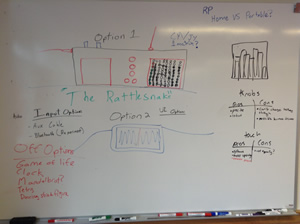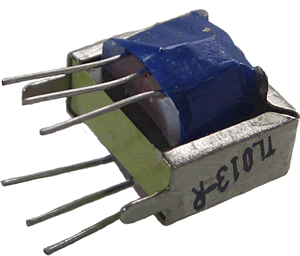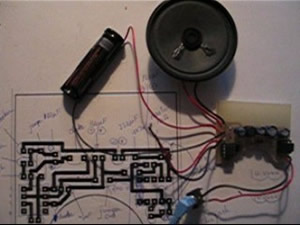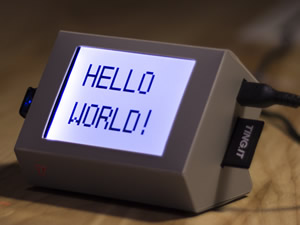March 24, 2016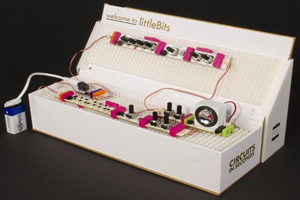
January 6, 2016
December 21, 2015. Logic Noise (HackaDay)
December 20, 2015.
November 20, 2015. Here's a example of a retro LED matrix visualizer for a wave form that resulted from a high school project from the '90s: Oscilloclock,
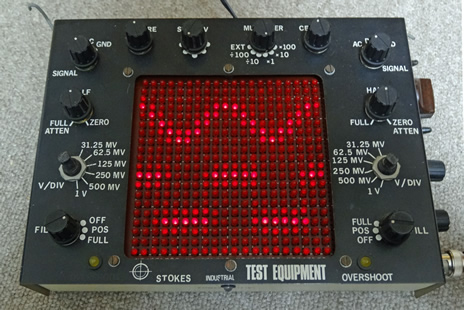
November 17, 2015. (J. Russett post to Forum). Hey guys,
I have a block diagram of the Korg Monotron which answers one of the more important questions we had today: How would we combine our own generated audio signal with an input signal? Below you can see that Korg has accomplished this task is by feeding the two into one signal before doing any filtering (in the Voltage Controlled Filter, VCF). After filtering, it passes all signals out to the speaker or into an aux cable.
Reference: http://www.residentadvisor.net/review-view.aspx?id=7888
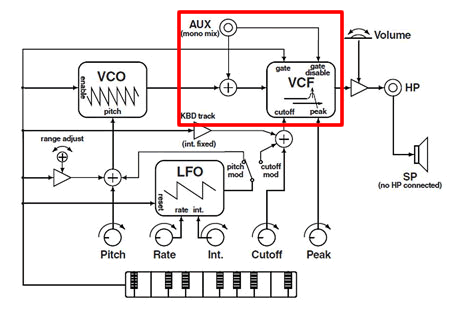
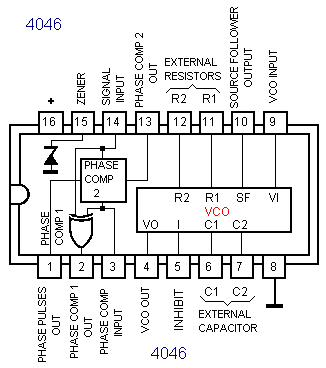 November 15, 2015. Tutorial: Filters
November 15, 2015. Tutorial: Filters
November 14, 2015. The CD4046 PLL/VCO
November 13, 2015: Synthesizer Links
November 12, 2015: Introductory Sound Tutorials
 Frequency and Sound Tutorial #1. Basic Sound Theory
Frequency and Sound Tutorial #1. Basic Sound Theory Frequency and Sound Tutorial #2. Simple Waveforms Combined
Frequency and Sound Tutorial #2. Simple Waveforms Combined Frequency and Sound Tutorial #3. Phase/Phaseshift
Frequency and Sound Tutorial #3. Phase/Phaseshift Frequency and Sound Tutorial #4. Harmonics and Harmonic Distortion
Frequency and Sound Tutorial #4. Harmonics and Harmonic Distortion Equalizers 1. Equalizing Basics
Equalizers 1. Equalizing Basics Equalizers 2. Analogue vs Digital EQ
Equalizers 2. Analogue vs Digital EQ
 Equalizers 3. How to Become Good at Equalizing
Equalizers 3. How to Become Good at Equalizing Equalizers 4. Practical Equalizing. Session 1
Equalizers 4. Practical Equalizing. Session 1 What is the envelope of a sound? (ADSR Explained)
What is the envelope of a sound? (ADSR Explained)
November 11, 2015: Jackson's Synthesizer References
- If we are going to input an audio signal it could be useful to split that signal into high, mid, and low frequencies. Here is the schematic of a colour organ. Colour organs were used for simple music visualization before computers, and you can see the the three sections for each range of frequencies below:
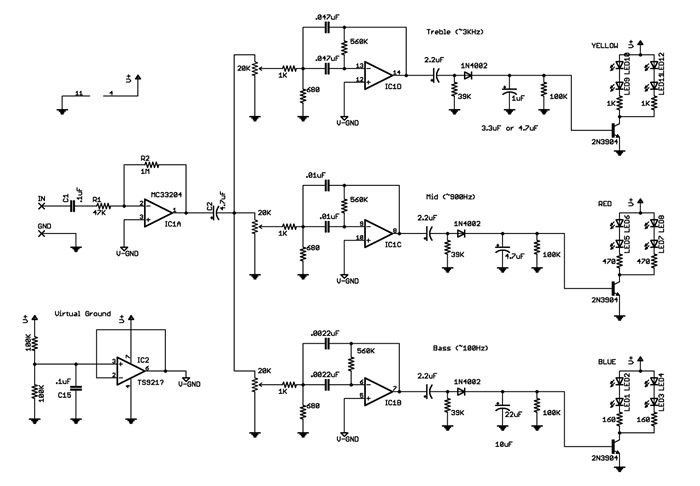
- Next, if we are going to work with audio signals we may need to employ the use of negative voltages. Here is site that explains some ways of creating a negative source, or "virtual" ground as it's called: http://tangentsoft.net/elec/vgrounds.html
- Regarding the synth module, I've found a comprehensive gif that explains all the components of an analogue synthesizer. If we do choose to build this, there are many opportunities for specialization, if anyone else is interested.
http://www.cubisteffects.com/images/Technotari/analog_synth_101.gif
- Another technical part of signal processing is the use of operational amplifiers. Here is the link to the datasheet for the LM358 op amp: http://www.onsemi.com/pub_link/Collateral/LM358-D.PDF .
On page 9 there is a schematic for a function generator, which will be useful for us.
November 10, 2015: Jamie's links to existing products
November 6, 2015: Conception
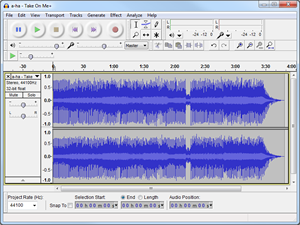 Definitions
Definitions
- Impedance: Resistance (real number) and Reactance (imaginary number)
Software-Based Sound Manipulation
Interesting Audio-Related Components and Circuits
Previous ACES Projects
Resources
- Rattlesnake Design option? Kickstarter Ting-bot
 Ting-bot (0:46)
Ting-bot (0:46)
- Chapter 4 of your Grade 10 Evil Genius workbook provides a gentle introduction to sound projects



November 15, 2015. Tutorial: Filters
 Equalizers 3. How to Become Good at Equalizing
Equalizers 3. How to Become Good at Equalizing
